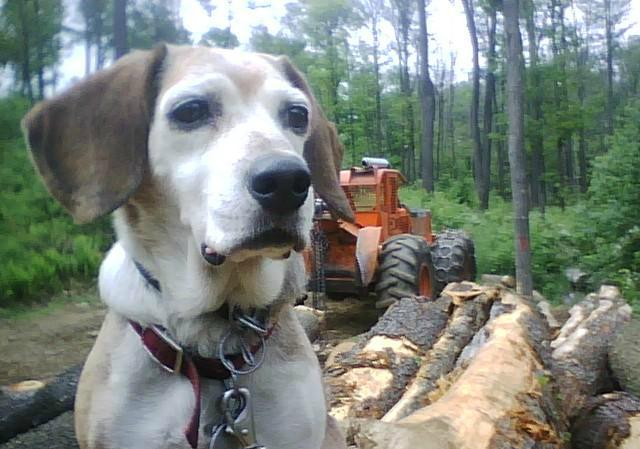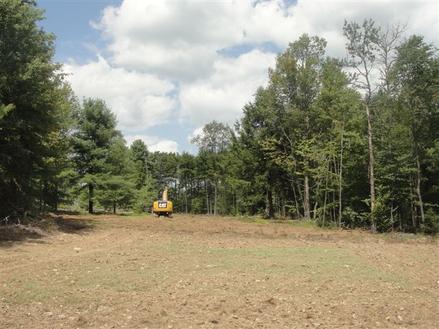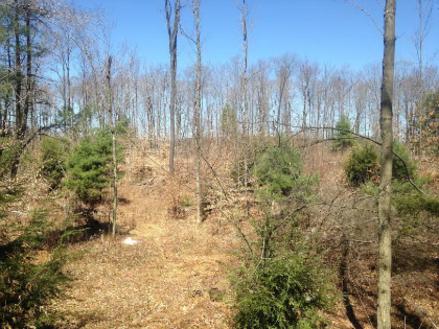by: Greg Berndtson of Berndtson Timber Management
Getting Started & Where it Can Go Wrong
Problems: After a harvest, landowners finds themselves either upset by what they were paid, or
unhappy with how their property was treated. “They made a huge mess and I’m stuck
with it.”
Low Pricing: Was it really a low price? Most times landowner feels duped by what was
promised vs. what was actually delivered. Example: “Logger suggested we had about
10 loads of logs and would make $10k. They cut 17 loads, we still only made
$10k.” Lots of Red Flags here!
Only way to really know fair pricing is using the same volume and value measures
consistently. Saw timber almost always is sold by board foot. Low-grade material may be
sold by ton or cords.
We should have a firm understanding of what is happening and the work that is being performed.
Are the woods being high-graded or commercially exploited, as compared to improvement
harvesting with a mix of good and low-grade coming out. In the above example, was it
17 loads of good logs, or just a few loads of logs and lots of low-grade? There is a
massive variation of pricing between high quality saw logs and low-grade pulpwood or
pallet stock.
Poor Outcome: Was the expected outcome fully discussed before work began? Contracts are
key in defining what is expected. Factors like height of slash, dealing with spring poles
or hazard trees, retirement of roads, compensation for severely damaging residual
trees etc. should all be laid out before work even begins.
Remember this is a business deal, treat it accordingly. Take time to research the people
you’ll be working with. Consider the value of the whole project and the whole property.
Example, how much research would you put into a contractor if you were spending
$25-30k on remodeling a bathroom in a $200k house? You should do the same
homework on a business cutting $30k in timber from your $200k dollar hunting
property.

Industry Players – Who’s Who?
Consulting Forester: Should be entirely independent, not affiliated with any specific buyer.
Works as your agent. Should be helping with your ‘big picture’ goals and designing a
harvest to reach your objectives.
Does the field work for you. Marks trees for harvest and assesses volume, value etc.
Likely bids your timber or negotiates the sale with a number of reputable buyers to get
you a fair price for timber and a quality job. Oversees harvesting and job closeout to
assure work is completed as described in the contract.
Procurement Forester: Paid by a timber buyer, be it a sawmill, logging company,
log brokering company etc.
Primary job is to keep logs moving into the operation they work for at a low enough
price the business is profitable. Often offers ‘free’ timber appraisals, with the hope of
buying your timber without involving anyone else or having to compete for it.
Be cautious of agreements that you are not comfortable signing.
For example, some companies will only offer an estimate if you agree to a ‘right of first refusal.’ They’re hoping to buy your timber without having to compete, but should you seek additional bids you will either be paying for their services or giving them the final chance at your timber. If you don’t know the cost of the penalty were you to opt for a different buyer, it can quickly become a messy situation.
Logger: Pretty self explanatory, the logger is responsible for the actual harvesting of the trees.
Loggers usually fall into 2 categories. Some work independently, opting to work directly
with landowners themselves. Others are contracted by timber buyers, for example a
sawmill that buys standing timber but uses contract logging crews to get it harvested.
This can create challenges if a contracted logger doesn’t show the level of concern for your property you would like, but is your only option as provided by the timber buyer.

Timber Payment Methods
Lump Sum: A lump sum timber payment is an agreement to sell the marked or designated
timber products for a set price. Once buyer and seller agree to that price, it is fixed.
This is a common method used by foresters who solicit or negotiate prices with multiple
potential buyers. The high bid wins the sale, and payment terms are set at total the
amount. Some foresters may allow for staggered payments, but usually timber is paid
for in full before any work begins
Be cautious of an unsolicited lump sum bid, or bids that are very vague. For example, a
bid that just states ‘250 trees, and we offer $15,000.’ Without knowing species, volume,
quality etc. there is no way to decipher a fair price vs. one that’s disgracefully low.
Itemized Pricing: This is a fixed price paid to the seller for each individual product. It is
especially common in lower grade products sold by tons or cords. Buyer agrees to
pay seller ‘$X’ per ton, and when that product is delivered to the mill it is weighed and
seller is compensated for that exact amount.
This for pf payment may also be used for saw timber. This removes the variation you would see with a %
agreement. In this instance buyer agrees to buy logs of each different species for ‘$X’
per thousand board feet. You would likely see a different price for every common
species. This is sometimes referred to as straight through pricing. Example, all red
maple saw logs #2 and better pay $350 per thousand board feet. Black cherry #2 and
better $550 per thousand board feet, etc through the list of species on the job.
Percentage Split: Most common method used when landowner and logger work together
directly. The logger performs the work of cutting, skidding, and merchandising logs. Logs
are many times bought on-site by a mill, veneer buyer etc. Value of a package of logs is
split by the agreed upon percentages and both logger and landowner paid. In really hot
markets, logger and landowner may be able to get multiple bids on logs before
agreeing to sell, but oftentimes loggers have specific buyers they prefer to work with.
Loggers like it because there is virtually no risk to them. Prices are not set, so if values
decline the logger and landowner share in that drop. However, when prices are high and
logs are in demand, this can be the most lucrative way to sell timber.
Good loggers should be sorting logs for the best markets to truly get
landowner the best prices. Examples would be laying out all the veneer quality logs and
getting them directly to a veneer buyer. White oak might be going to a stave mill to
end up as whiskey barrels and so on. It is in both parties’ best interest to market logs to
the best paying markets, however that may not be the case. Loggers lacking equipment
to sort logs may work on a percentage but ship all their logs to one mill. You have every
right to ask how the sale will go.
This method can quickly lead to high-grading in a number of ways. Who is selecting the
trees for harvest? If it is logger select or diameter limit cutting, does that actually help
you reach your habitat improvement or long-term goals? Logger may also opt to only
pull out the nicest logs. The price paid per thousand board feet looks great if its only the
best quality logs, while the lower grade top logs are left in the woods.
Be sure you understand how you are getting paid. Payment made on the landing before
and logs leave is relatively transparent. If logs are going to be hauled to a mill first, you certainly want to know what mill, when they are being hauled, etc.

Contract Details
Contract with Forester: It is likely you will have a contract with your forester, as they want to
spell out what work they will be doing on your behalf, and how they will be paid. Be
sure you understand what responsibilities they are taking on acting as your agent.
It is likely the forester will also have a contract they use for the logger or buyer of a
timber sale. Absolutely go over that with them, and be sure the conditions you have
asked for are clearly spelled out.
Contract With Logger: Remember an agreement like a % split is not technically a timber sale.
You are actually hiring and employing a logger or logging business to cut trees for you,
and they are being compensated with an agreed upon rate of pay or % of timber value.
This is important to note because it is now your responsibility to draft your own contract
or fully understand the contract the logger provides you.
You certainly need to take time to determine the business you are considering, has all of the appropriate
insurances. Liability insurance to ensure compensation for damages is a huge one, but
you may also need to look into the logging business structure. If the logger has a crew
of guys but all of them claim self employment, what happens if someone ends up badly
injured. It can become a messy situation if you are not properly protected from claims,
and some states have rules on where responsibility falls.
Regarding the harvest, be sure all the provisions are clearly spelled out. Important things to consider:
Who is determining what trees are being harvested and how are
they being identified?
What is the expected timeline of the job and duration of harvest?
Will there be environmental factors like excessively wet conditions where you want to
shut down harvesting temporarily, and if so what are the parameters?
What is the expectation for job closeout and retirement of skid trails, log landings, etc. If a dispute does arise, how will it be handled?

Takeaways – Red Flag Warnings
Do Your Homework: It sounds simple, but it is surprising and scary how many landowners I
have met and continue to see make quick, almost spur of the moment decisions
without much thought. Consider the overall value of your land and assume that there
may be some timber value on it as well. What is that total value? Now compare it to
other assets. Would you trust your pension fund or a child’s college fund to the first
person that knocked on the door and offered too ‘help you manage’ that investment?
Have a set of well-defined goals, and then find the professionals that are committed to
helping you achieve them. Be thorough in the interviewing process of those
professionals, and don’t lose sight of the fact that you are hiring them to work for you.
Check references, and if they are open to it, look at current and/or previous jobs. You
will know pretty quickly the quality of work they do. Does the landing look neat and
orderly, or are there oil buckets and trash scattered about? How does the forest look?
Are there trees bent over or half uprooted and just left, or has time been taken to clean
that up? Is there a lot of potential value left in the wood, implying the logger is only
taking the nicest stuff and wasting volume you should be paid for? Are erosion control
measures and Best Management Practices being followed, and roads retired properly
on closed out jobs? All things you want to consider before signing contracts.
Red Flags: Beware of offers that sound too good to be true, or the ‘Big Money” sales pitch. A
buyer or logging contractor may ‘offer’ a really high price or quote you the estimated
gross revenue for your timber. Then the contract defines a % split, and your revenue
will not be anywhere close. For example, a buyer may suggest they are getting over $1
a board foot for nice sugar maple, or $1000 per thousand board feet. That may be true,
but if the contract is a 50/50 split the landowner is only making .50 cents a foot or
500 per thousand board feet. It is in your best interest to ask follow up questions to
clarify those comments.
Skip the Timber Pimp! These guys normally present themselves as foresters, but
then try to negotiate your sale in a number of ways. Some will try to lock in a price with
a buyer on their own, then offer to buy your timber at a lower rate while profiting the
difference. Others will try to work a % split, but rather than logging it themselves they contract that work out and profit the difference. While its a lucrative business, they’re
rarely working with the highest caliber of loggers and buyers. Where it goes terribly
wrong or when there is an issue, and the contracts are so vague or non-existent, the
landowner really has no grounds to protect themselves.
Don’t be afraid to ask for help. If something doesn’t make sense, it may be worth
having an unbiased set of eyes from a state office or Extension Service review a
contract for you. And trust your gut. If something doesn’t feel right, there very well
may be a good reason. Selling timber to generate revenue and more importantly
improve habitat should be a fun experience with a lot of long term rewards. Know
there are folks out there who really are service oriented and trying to help you, but
you may have to do a little digging to find them.

